Compact and miniature washing machines are a separate class of devices, created primarily for studio apartments and other situations where space is limited, and the installation of a washing machine is necessary. For example, in one-room or two-room apartments, a full-size washing machine with a depth of 60 cm often does not fit into the bathroom.
Today we will look at the Candy Aqua 114D2-07 model, which has already been in our test lab. In 2021, it showed quite good results. However, since then, some changes have occurred in the world: the Candy brand is now under the control of the Chinese company Qingdao Haier.
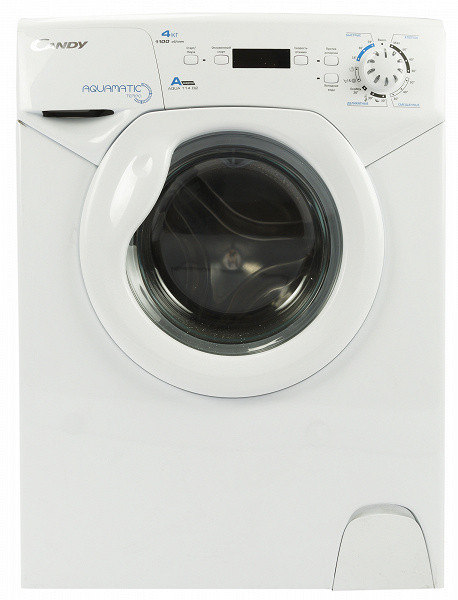
The information is interesting, but we are primarily concerned about whether this has affected the quality of the wash. Therefore, we will again turn our attention to the Aqua 114D2-07 model. This time, we will conduct our standard tests, and also add a few additional ones: we will wash a set of bed linen, a mattress pad, check the quick wash of wool and test the wash of heavily soiled pet bedding.
Characteristics
| Manufacturer | Candy |
|---|---|
| Model | Aqua 114D2-07 |
| Type | compact front loading washing machine |
| Country of origin | Russia |
| Guarantee | 1 year |
| Service life * | 7 years |
| Energy efficiency class | A |
| Washing class | A |
| Installation type | freestanding |
| Drum material | stainless steel |
| Maximum cotton loading | 4 kg |
| Direction of hatch opening | right |
| Maximum spin speed | 1100 rpm |
| Delayed start | up to 24 hours |
| Noise level during washing | 56 dB |
| Weight | 47 kg |
| Dimensions (W×H×D) | 510×700×450 mm |
| Length of network cable | 1.4 m |
* Contrary to popular belief, this is not a period after which the device will necessarily break down. However, after this period, the manufacturer ceases to bear any responsibility for its functionality and has the right to refuse to repair it, even for a fee.
Equipment
The car arrived to us in technological packaging made of foam plastic, which was reinforced with wooden inserts and covered with polyethylene film.
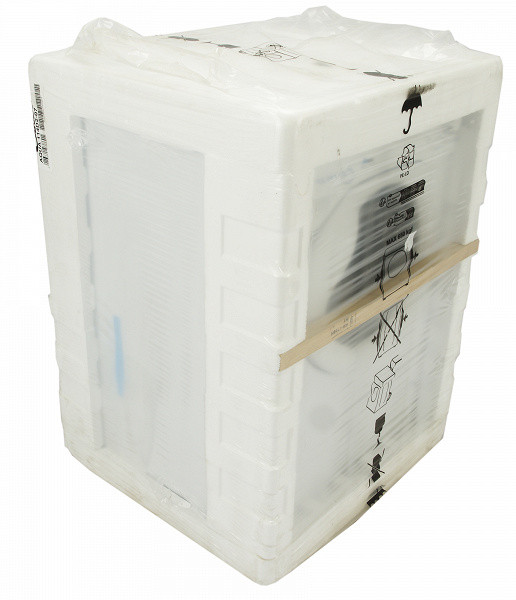
Inside the packaging, in addition to the machine itself, we found:
- hose for connecting to the water supply
- hose for connecting to the sewer (installed on the machine)
- bracket for attaching the drain hose
- user manual
- warranty card and a sticker indicating the energy efficiency class
At first glance
The main feature of this model is its compact size. The small dimensions led to a reduction in the drum and hatch, as well as the control panel and compartment for detergents. As a result, we see a familiar washing machine, which, as if, was slightly reduced by magic.
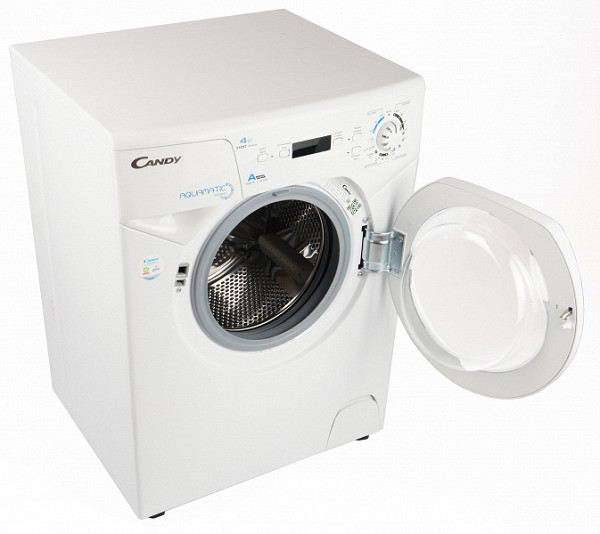
It is worth noting that the developers have placed all the elements in the usual order: in the upper part of the front panel there is a compartment for detergents, a control panel with a small display and a program selector.
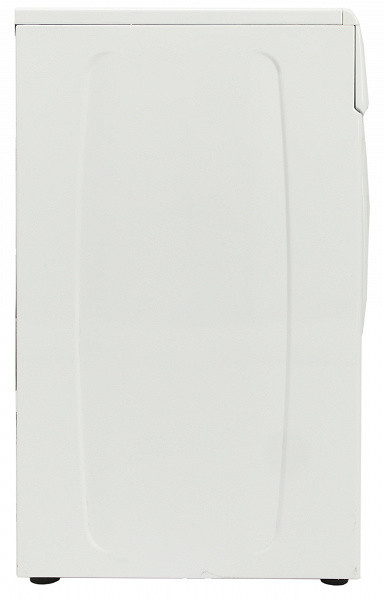
The side metal walls have decorative stamping, which also gives the body additional rigidity.
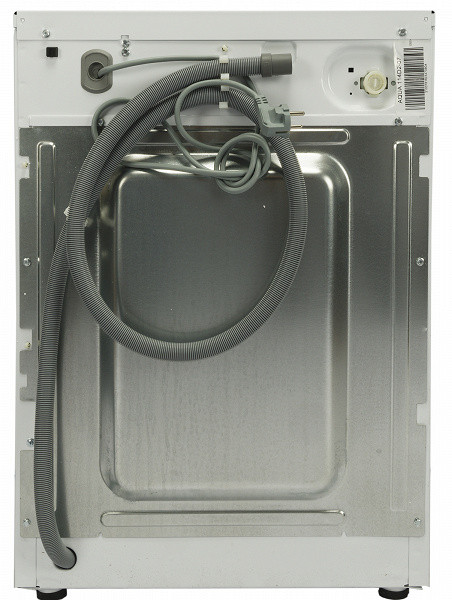
The back wall is smooth. At the top there is a nipple for connecting the inlet hose, which is equipped with a removable mesh filter that protects the machine from rust and dirt in the tap water (this is especially important when turning off and re-supplying the water, when deposits can fly out of the pipes that can clog the filters). At the bottom of the back wall there is a non-removable corrugated drain hose of traditional design. This model does not have transport bolts.
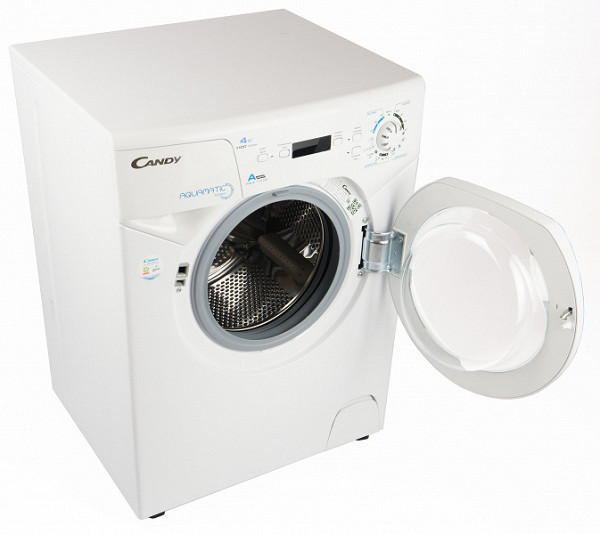
The compact door is equipped with a single transparent glass.
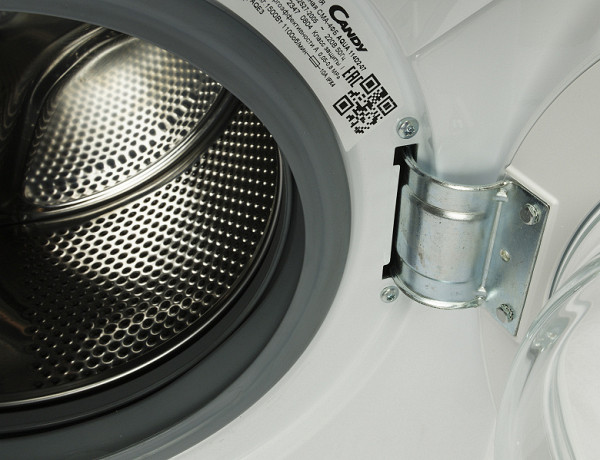
The lid is attached to a metal hinge and opens in an unusual direction for most users — to the right. This is important to consider when planning the room where the washing machine will be installed. The latch is made of silumin alloy, and the counterpart is made of plastic.
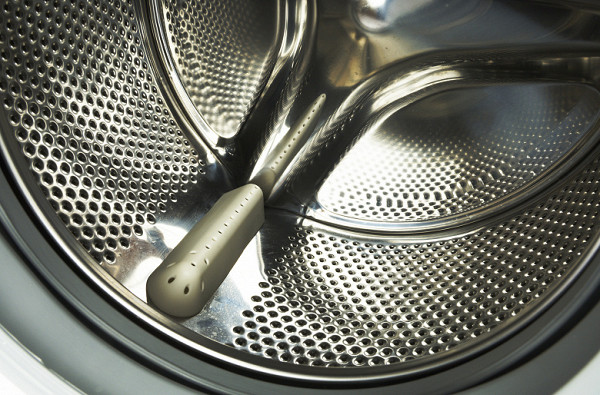
The drum has uniform perforation, and its walls are made in the form of a simple mesh surface without stampings to improve hydrodynamics. The design of the straight plastic strikers responsible for mixing the laundry is also standard.
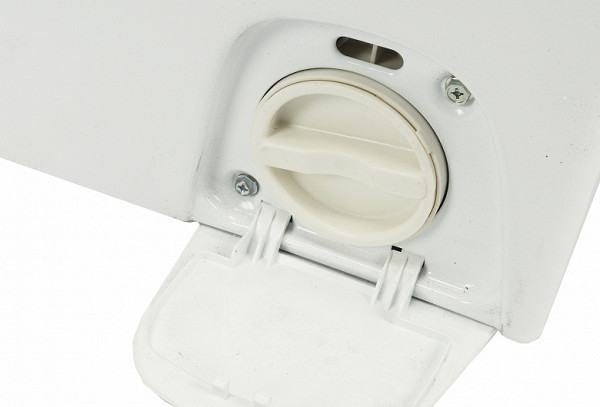
The filter also looks classic, the hatch of which is located in the lower right corner. It is hidden behind a plastic threaded plug.
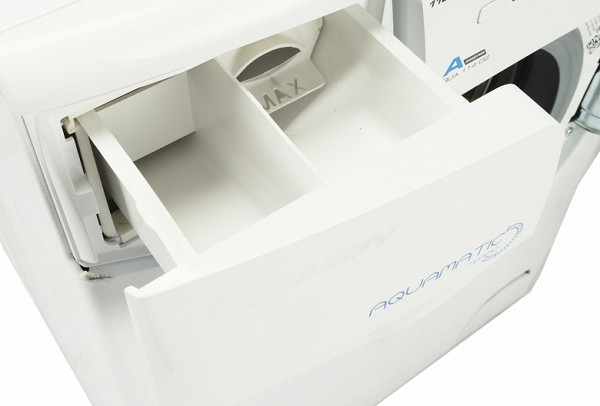
The detergent compartment consists of two parts: one for washing powder or gel, and the other for rinse aid. Since the Candy Aqua 114D2-07 model does not have a pre-wash function, the third compartment is not needed.
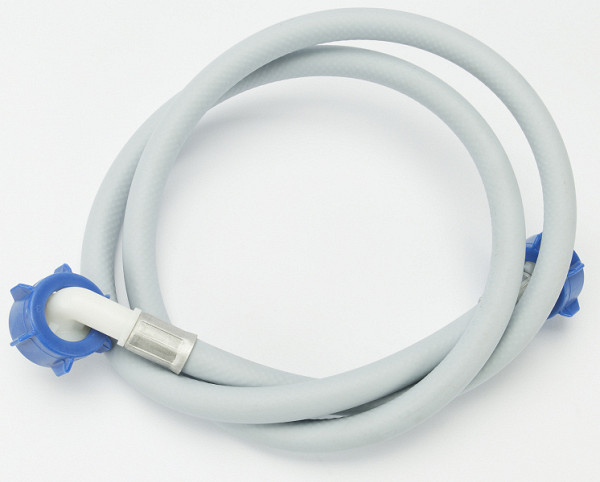
The inlet hose is standard, without any additional features such as AquaStop or AquaProtect valves.
As per tradition, we will perform a partial disassembly of the device to take a look at its insides. At this stage, we will not go into details, leaving the reader the opportunity to independently pay attention to the parts of interest to him.
However, it is worth noting that the user will need to remove the top cover, unscrew two screws, remove the transport crossbar and remove the polystyrene gasket.
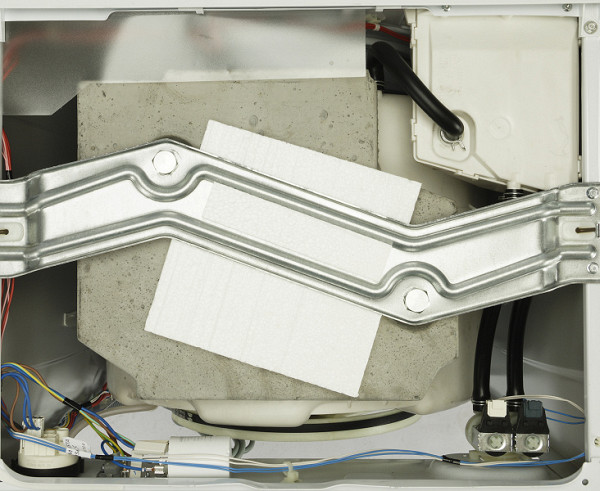
Apart from this nuance, the internal structure of the washing machine did not present us with any surprises: all other technological solutions are standard.
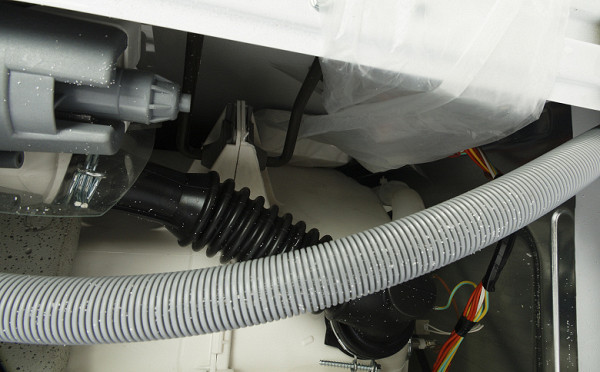
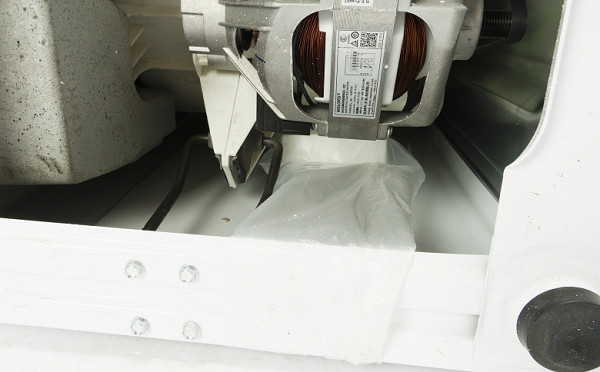
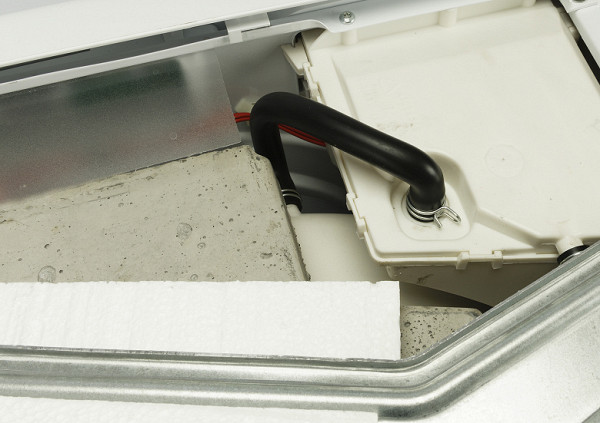
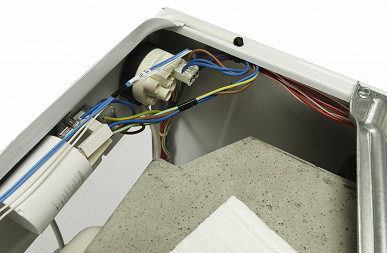
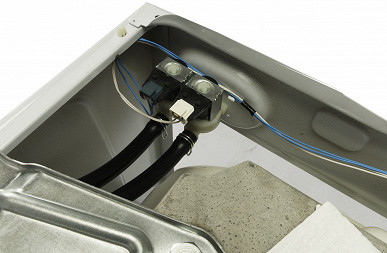
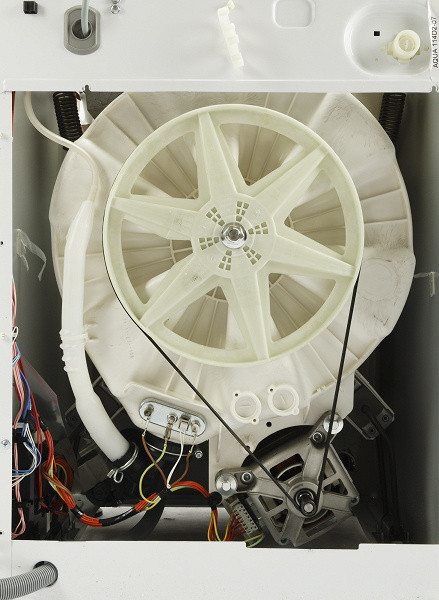
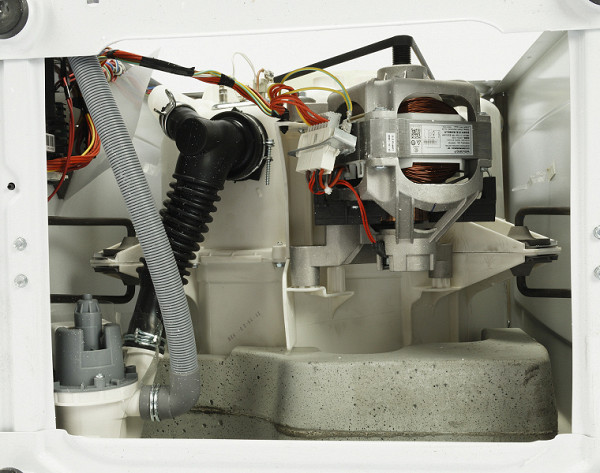
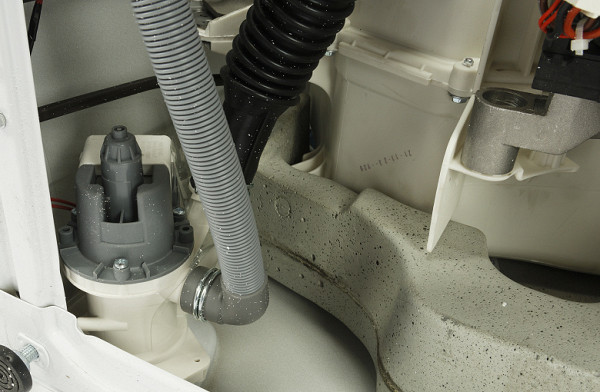
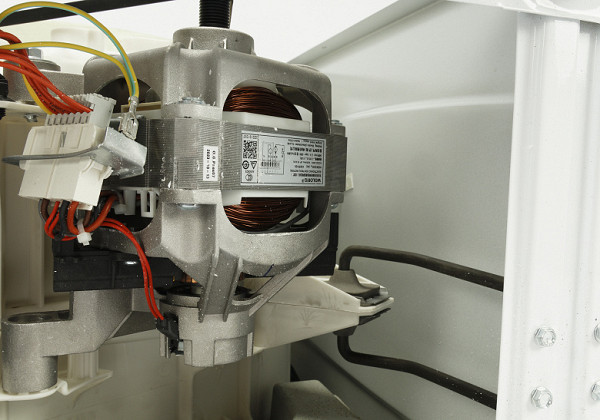
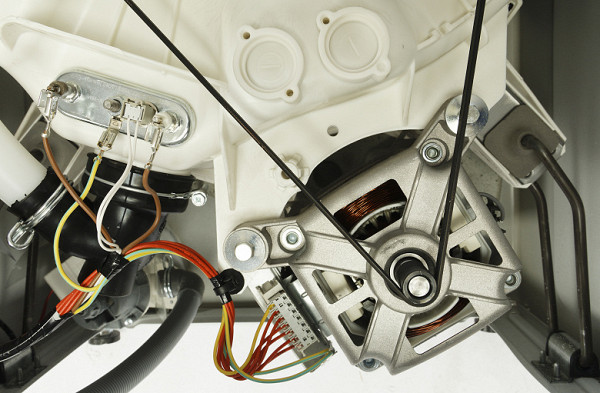
Instructions
The user manual is printed on thin, yellowish paper of poor quality. The printing is also not impressive: although the text of the manual is readable, some of the illustrations could be clearer.
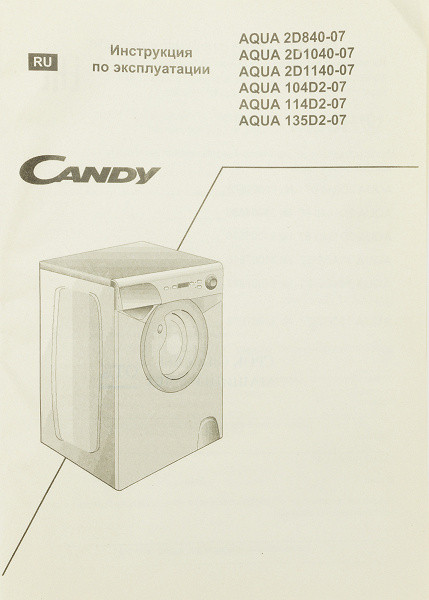
The 27-page brochure is intended for several models of washing machines. Some of the functions mentioned did not work as expected, some features were missing in the Aqua 114D2-07, and some of the available ones were not described in the manual. However, the machine was intuitive to operate, which makes it possible to do without the manual.
The documentation package includes a warranty card, a list of service centers, a sticker with information on energy efficiency, and a small color booklet with recommendations for clothing care.
Control
The control panel includes five mechanical buttons, a circular program selector and a display with red LED indicators. The screen displays information about the expected washing duration, the selected spin speed and the time until the start of the delayed wash, if such a function is set.
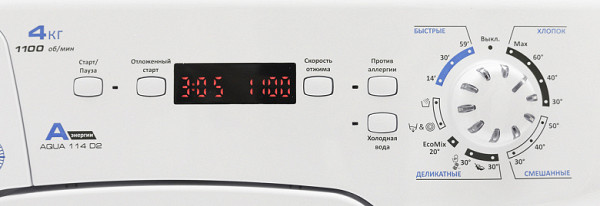
The Start/Pause button allows you to start and pause the wash. The delayed start function allows you to delay the start of the selected program for up to 24 hours in one-hour increments.
The spin speed is adjustable from 400 to 1100 rpm in 100 rpm increments.
The Anti-Allergy button activates the wash mode with increased water consumption. This mode provides gentle treatment of fabrics and is recommended for people with sensitive skin.
The Cold Water option completely turns off the heating, maintaining the previous water level, time, and mode. The manufacturer recommends using this mode for fabrics that cannot withstand high temperatures, colored materials, curtains, delicate synthetics, small rugs, and lightly soiled items.
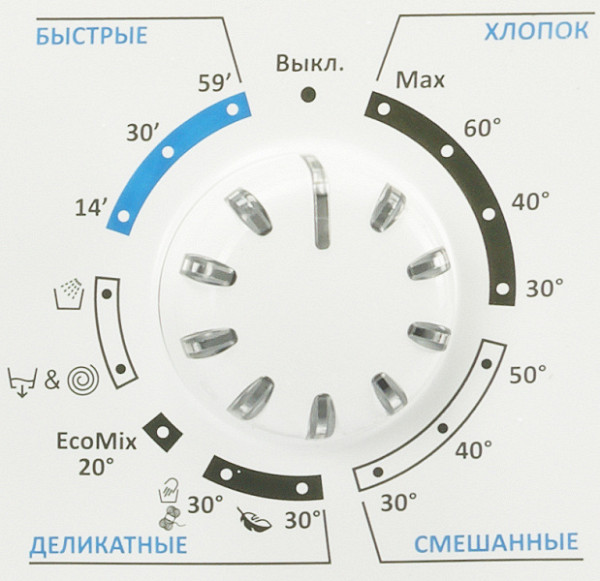
The program selector not only allows you to select the desired mode for a specific type of fabric, but also controls the washing temperature. By turning the knob, you can choose one of four temperature modes for cotton (30, 40, 60 and maximum) and one of three for mixed fabrics. Delicate fabrics such as wool and silk can be washed at 30 ° C.
In addition to the standard programs for washing cotton, mixed and delicate fabrics, this model, like most Candy washing machines, offers three proprietary quick wash modes of 14, 30 and 59 minutes.
The table below shows the default values for each of the programs and the possible ranges of manual settings.
| Program | Duration of the program | Default spin, rpm | Possibility of changing the spin speed, rpm |
|---|---|---|---|
| Cotton Max | 3:00 | 1100 | 0—1100 |
| Cotton 60°C | 3:05 | 1100 | 0—1100 |
| Cotton 40°C | 3:00 | 1100 | 0—1100 |
| Cotton 30°C | 1:47 | 1100 | 0—1100 |
| Mixed 50°C | 1:59 | 1000 | 0—1000 |
| Mixed 40°C | 1:59 | 1000 | 0—1000 |
| Mixed 30°C | 0:59 | 1000 | 0—1000 |
| Delicate | 1:06 | 400 | 0—400 |
| Wool | 0:59 | 800 | 0—800 |
| Fast 14' | 0:14 | 1000 | 0—1000 |
| Fast 30' | 0:30 | 1000 | 0—1000 |
| Fast 59' | 0:59 | 1000 | 0—1000 |
Operation
Preparing the Candy Aqua 114D2-07 for operation is different from the usual: instead of four standard transport bolts on the back wall, this model has only two, hidden under the top panel. To remove them, you need to remove the panel, which is fastened with two screws, for which you will need a 7 mm socket head. You also need to remove the gaskets between the lid and the cross stabilizer.
This is perhaps the only case in our practice when partial disassembly is required to prepare the washing machine for operation.
After that, tilting the machine, you should pull out two foam gaskets that fix the drum.
Connecting the device is otherwise no different from similar models: the inlet hose is connected to the cold water supply outlet, and the drain hose is discharged into the sewer.
Although the design of the drum lid is traditional, it has its drawbacks: you need to open the lid strictly perpendicular to the front plane, otherwise the lock may jam a little.
On programs whose duration is not indicated on the selector, the «Kg Check» function is activated. With its help, the machine determines the amount of laundry loaded and adjusts the duration of the cycle based on this. Although Aqua does not have a separate half-load function, «Kg Check» allows you to significantly reduce the washing time: a smaller load means a shorter cycle, as well as lower water and energy consumption.
When you first select a program, the display shows the expected running time based on a full load. Shortly after the start of the cycle, this information is adjusted and the exact running time of the program appears on the screen.
However, the estimated running time is often slightly shorter than the actual one. The rinsing and spinning stages can take longer than expected. Therefore, situations may arise when it seems that the wash will soon be finished, but in fact you have to wait another 5-10 minutes. This is like waiting for a taxi that, according to the app, «will arrive in 5 minutes». It would be better to set a slightly higher time and finish the wash a little earlier.
After the final spin and the pump stops, the machine pauses for about 2 minutes before unlocking the drum.
After washing is completed, the device remains in standby mode. The End indicator on the display remains lit until the program selector is returned to the neutral position.
Care
It is recommended to use a damp cloth to clean the outer surfaces of the case. As with most washing machines, do not use abrasive cleaners or solvents.
The detergent drawer should also be cleaned regularly to remove any remaining powder or additives. To do this, remove the cassette completely, apply a little force, rinse it under running water and return it to its place.
It is important to monitor the condition of the exhaust filter and clean it as needed. Before cleaning it, it is recommended to put a rag on the floor or place a convenient container to avoid the formation of a puddle.
Our measurements
We decided to roughly estimate the capacity of the washing machine drum. Since its shape is not strictly cylindrical, we can imagine the drum volume as a regular figure. In this case, we are considering a cylinder with a radius of 18 cm and a height of 24.5 cm. Its volume is 24.938 cm³, which is approximately equal to 25 l.
As an experiment, we decided to track the operation of the main program using a stopwatch (the standard Cotton program was used with default settings). Here are the results we got.
| Actual time to completion | Countdown on display | Action | Total water consumption, l |
|---|---|---|---|
| 1:56 | 3:00 | start of the program, start of water filling | |
| 1:55 | 2:59 | start of drum rotation | 6.1 |
| 1:50 | 2:58 | adding water | 7.1 |
| 1:48 | 1:40 | the weight of the laundry is determined, the program running time is calculated, washing starts | |
| 0:30 | 0:25 | drain water, spin | |
| 0:23 | 0:24 | fill with water, rinse | 10.5 |
| 0:20 | 0:18 | drain, wring | |
| 0:17 | 0:17 | fill with water, rinse | 13.8 |
| 0:13 | 0:09 | drain, wring | |
| 0:01 | End | sound signal | |
| 0:00 | End | unlocking the drum |
Energy and water consumption
Unfortunately, these parameters are not clearly stated in the instructions, so we offer you the results of our measurements for the programs that we used during the testing process.
| Program | Amount of water, l | Power consumption, kW h |
|---|---|---|
| Cotton Max | 23.0 | 1.46 |
| Cotton, 40°C | 13.8 | 0.68 |
| Wool, 30°C | 49.2 | 0.12 |
| Mixed, 30°C | 21.4 | 0.11 |
| Fast, 14' | 15.4 | 0.08 |
Due to the small drum volume, the washing machine demonstrated excellent efficiency: a small amount of water in the tank does not require significant energy consumption for heating.
Spin
We were also interested in the actual spin efficiency, which we measure in grams of water per gram of cotton using the formula: ( spin weight - dry weight ) / dry weight . The reference linen was 10 white terry towels from Ikea, weighing about 1.8 kg in total.
| Spin speed, rpm | Remaining water per gram of dry laundry, g |
|---|---|
| 400 | 1.37 |
| 600 | 1.02 |
| 800 | 0.81 |
| 1000 | 0.70 |
| 1100 | 0.67 |
Noise
We measured the noise level in a room where washing machines are often placed — the bathroom. The noise meter was located at a level of 1 m from the floor and at a distance of 1 m from the device, in the center of the front panel.
| Working hours | Noise level, dBA |
|---|---|
| General noise level in the room | 30 |
| Washing | 56 |
| Drain | 57 |
| Intermediate spin | 68 |
| Rinsing | 57 |
| Final spin 1100 rpm | 74 |
The maximum power consumption of the machine, recorded during practical tests, was 1534 W. In standby mode, the washing machine consumes 0.6 W, and when switched off — 0.4 W.
Practice tests
To evaluate the basic function of the washing machine, we used a set of white terry towels and deliberately applied common and difficult to remove organic contaminants to them. Now let's see how the standard programs cope with this task.
Cotton, 40°C
We stained a set of white cotton towels with red wine, soy sauce, ketchup, and cocoa, using each of these substances on a separate towel. The stains were dried at room temperature for 24 hours, after which we began a test wash.
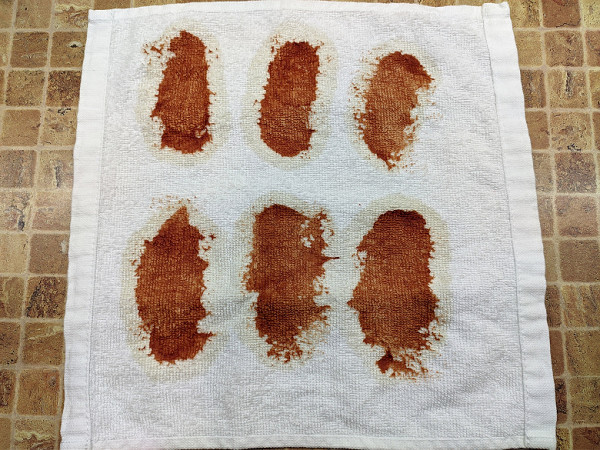
Ketchup
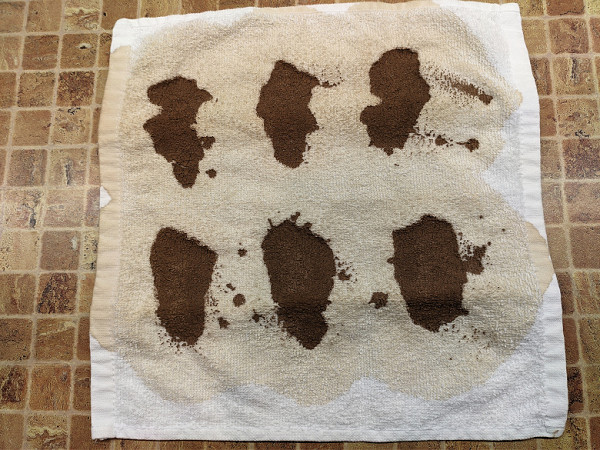
Cocoa
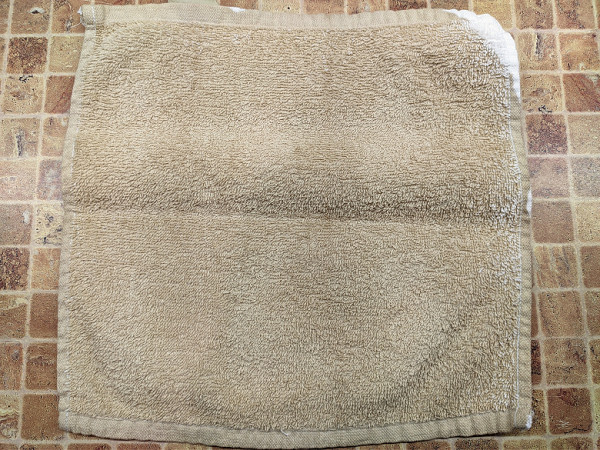
Soy sauce
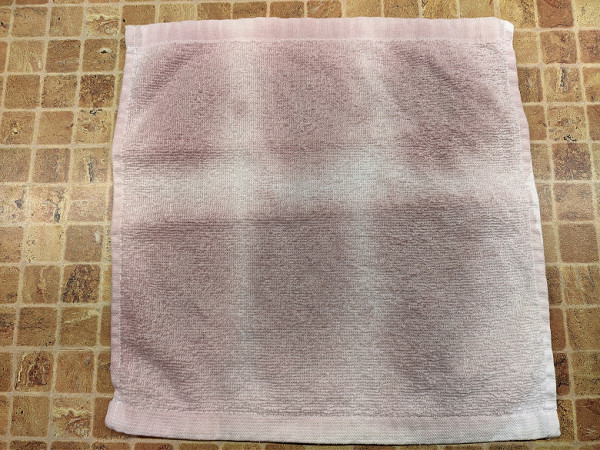
Red wine
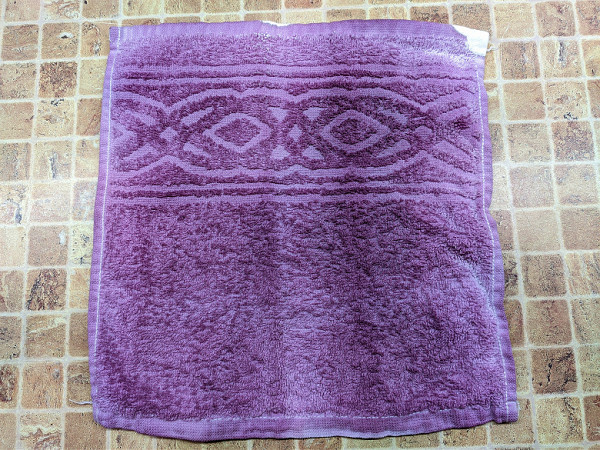
Red wine (additional test — heavy contamination)
We used a white laundry detergent from a well-known manufacturer, following the recommended dosage on the package.
The soiled towels were washed on the standard Cotton program at 40 °C. The washing machine automatically set the operating time to approximately 1 hour 32 minutes. The results can be seen in the photos below.
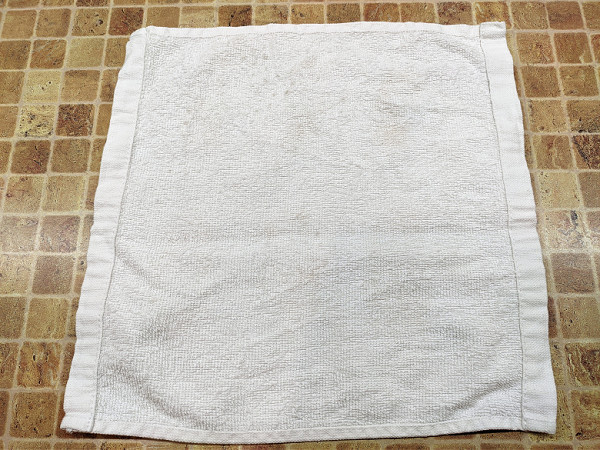
Ketchup
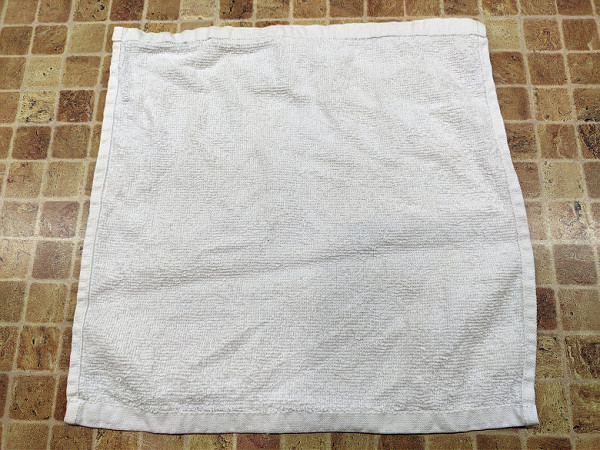
Cocoa
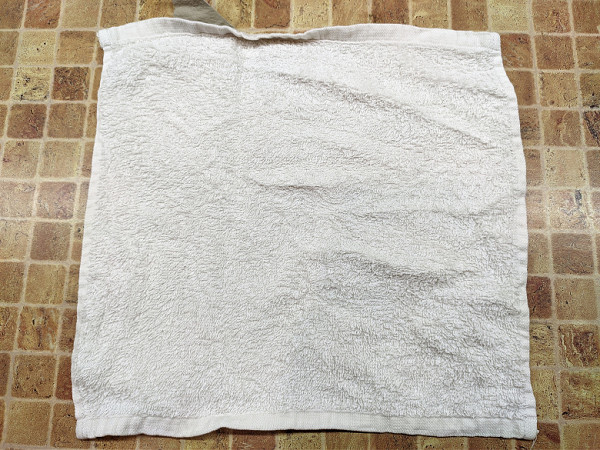
Soy sauce
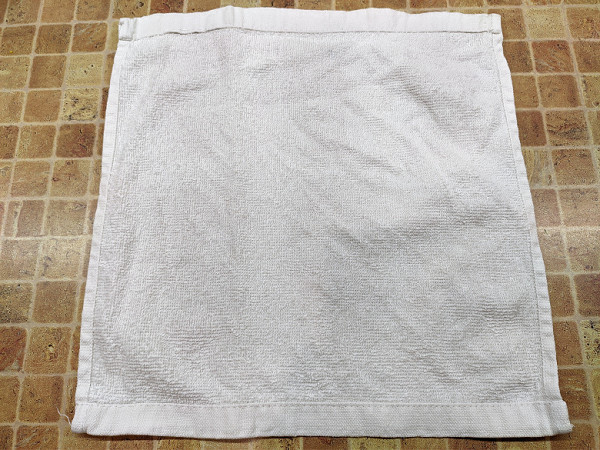
Red wine
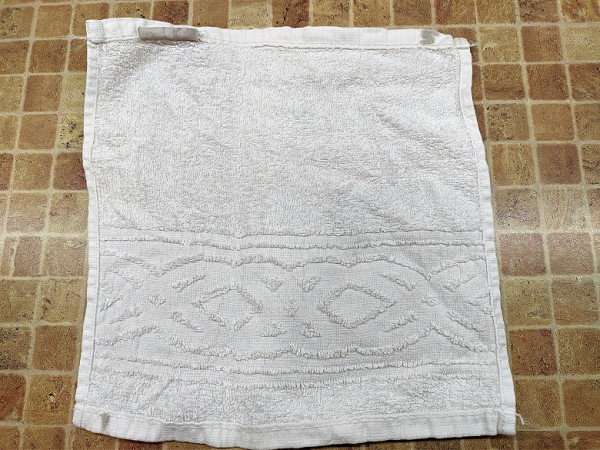
Red wine (additional test — heavy contamination)
The cocoa and soy sauce stains were washed out without a trace, the ketchup left barely noticeable traces, as did the red wine stains.
Result: excellent
Cotton program, maximum temperature
We restored the stains on the towels with the same substances as last time, and also left them to dry for a day.
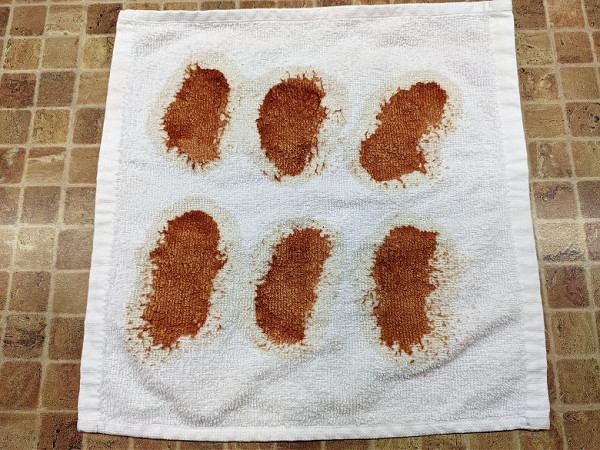
Ketchup
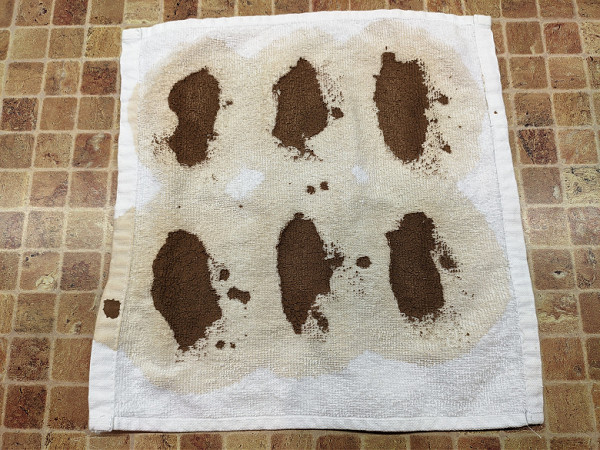
Cocoa
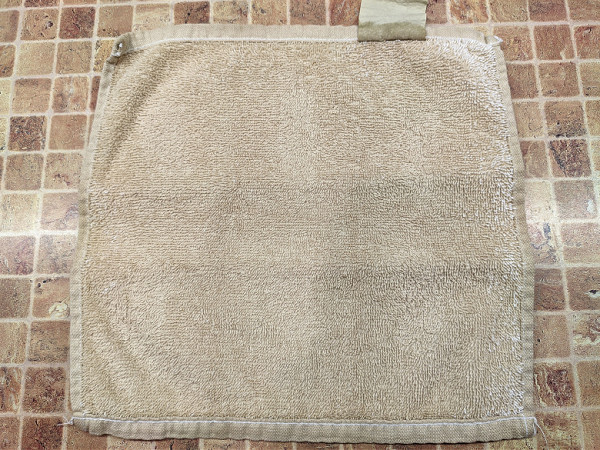
Soy sauce
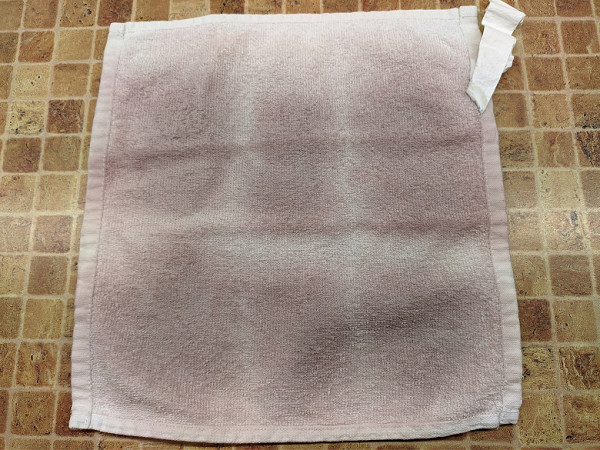
Red wine
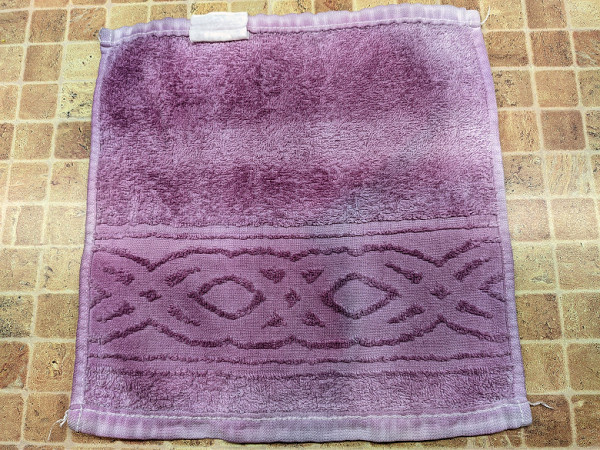
The laundry was washed on the Cotton program at a maximum temperature of 75 °C. After washing, there were no traces of cocoa, ketchup or soy sauce. The red wine stains, which in our experience are the most persistent, remained slightly visible. The napkin completely soaked in wine had no clear stains, but its color was slightly “dirty” compared to well-washed cotton.
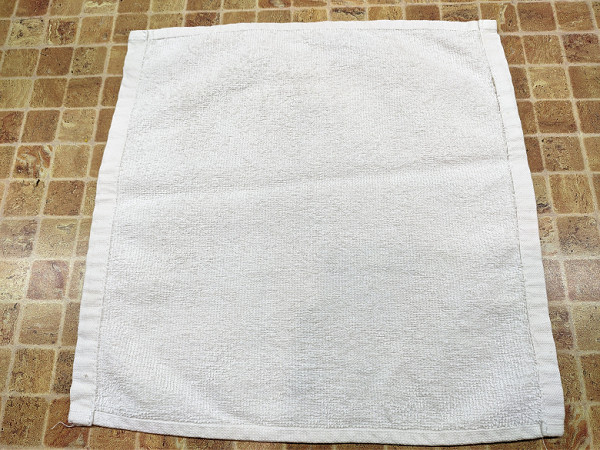
Ketchup
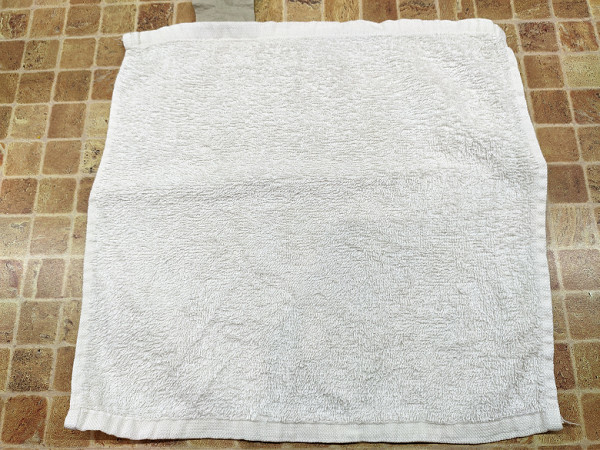
Soy sauce
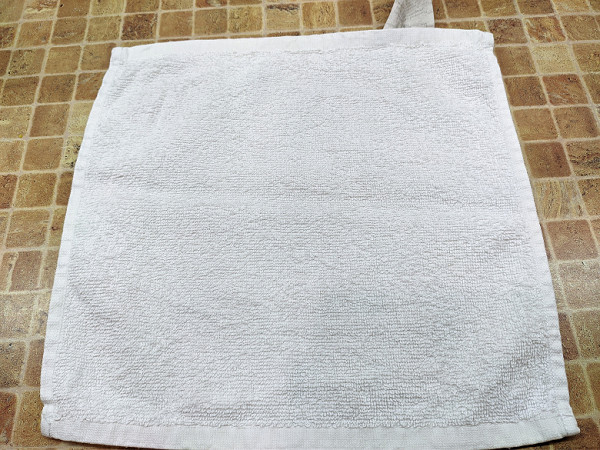
Cocoa
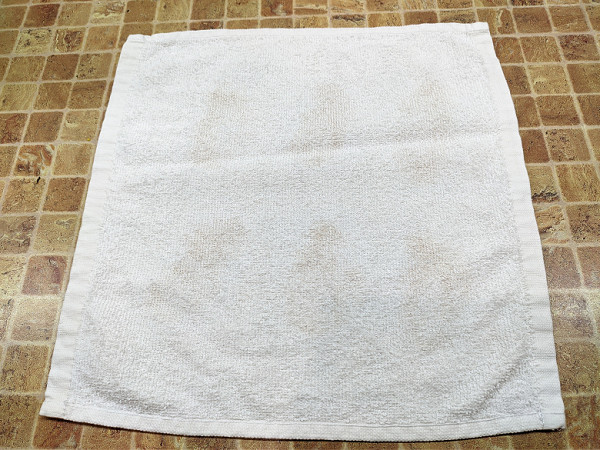
Red wine
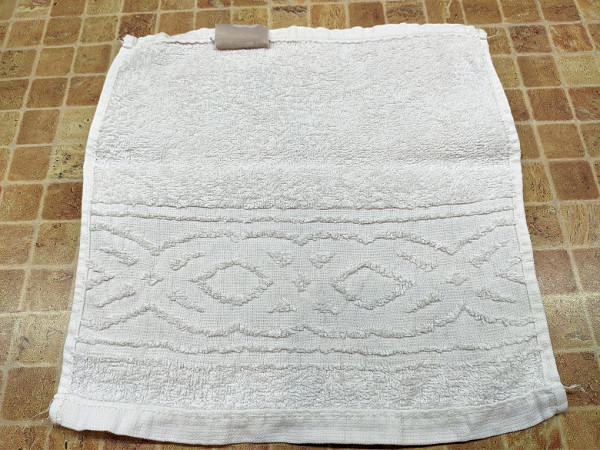
Red wine (heavy pollution)
To remove the stains left over from this and the previous tests, we washed the fabric again, adding bleach.
Result: Excellent
Bed sheets
The small volume of the drum turned out to be quite sufficient for washing a set of bed linen, which we checked in practice. We chose a gentle mode at a temperature of 40 degrees and launched the corresponding washing program.
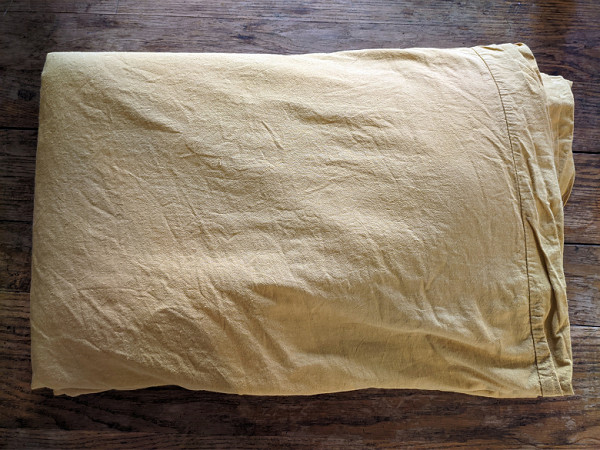
We wanted to find out whether a small drum volume is enough to wash a double bed linen set and whether such a large load will affect the quality of the wash.
Our conclusion is that the bed linen set is washed perfectly, and standard stains are completely removed. However, if the linen has heavy stains from liquids, it is better to split the wash into two parts.
Result: excellent
Mattress pad
We also did a wash test on a heavily soiled mattress pad that had been used as a dog bed. It was clear that it had accumulated many different types of dirt: hair, dirt from the street brought in on paws, and traces of food, including blood and other stubborn stains.
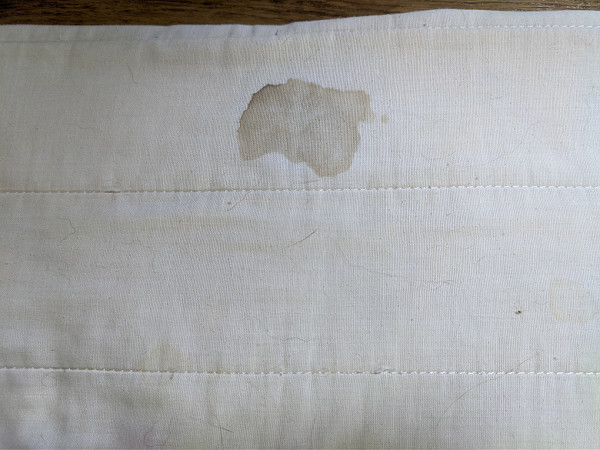
We didn't expect a perfect result due to the heavy dirt. However, even one wash helped to get rid of the most noticeable stains. Of course, a slight yellowness remained.
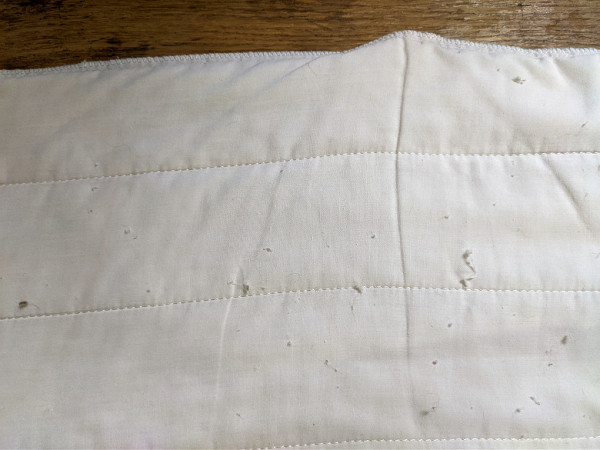
Result: good
Wool program
To test washing delicate fabrics, we loaded a large woolen blanket weighing about a kilogram into the Candy Aqua 114D2-07, selecting the appropriate mode.
We were quite satisfied with the result: the machine successfully washed and rinsed the blanket, which almost completely filled the drum, and no damage to the fabric was found.
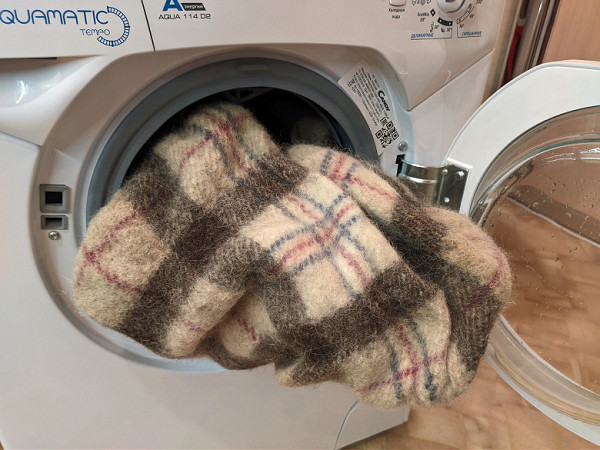
Result: excellent
Conclusions
The compact washing machine Candy Aquamatic 114D2-07, according to the results of our tests, demonstrates a washing quality comparable to full-size models, while the consumption of water and electricity is significantly lower. Although with the current (not too high) tariffs for these resources this is not the main advantage, such savings are still pleasing. Especially considering that the low power does not require the installation of a separate electrical cable, which allows you to quickly install the machine in old apartments or in the country.
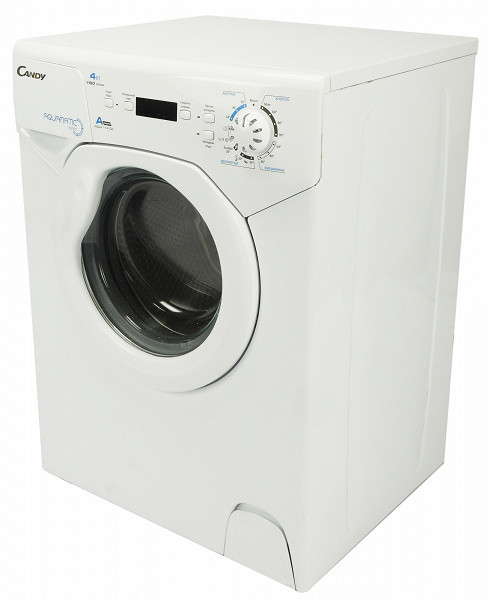
The main advantage of this model is its compact size, which makes it an ideal option for studio apartments or rooms with limited space in the bathroom. The washing machine can be placed under the sink, which will allow you to effectively use the available space.
The only drawback that we were able to identify is the not very high quality of spinning. As for the design nuances, it is worth noting the lock: its opening and closing requires caution, as it does not seem particularly durable. It is difficult to say whether there will be problems in the future. However, based on personal experience, we can note that this model has been successfully working for two years for one of our colleagues without any problems with the lock.
Pros:
- small size, suitable for installation under the sink
- excellent washing quality
- saving water and electricity
- low power consumption
Cons:
- maximum spin speed 1100 rpm
- not the best drum lid design
